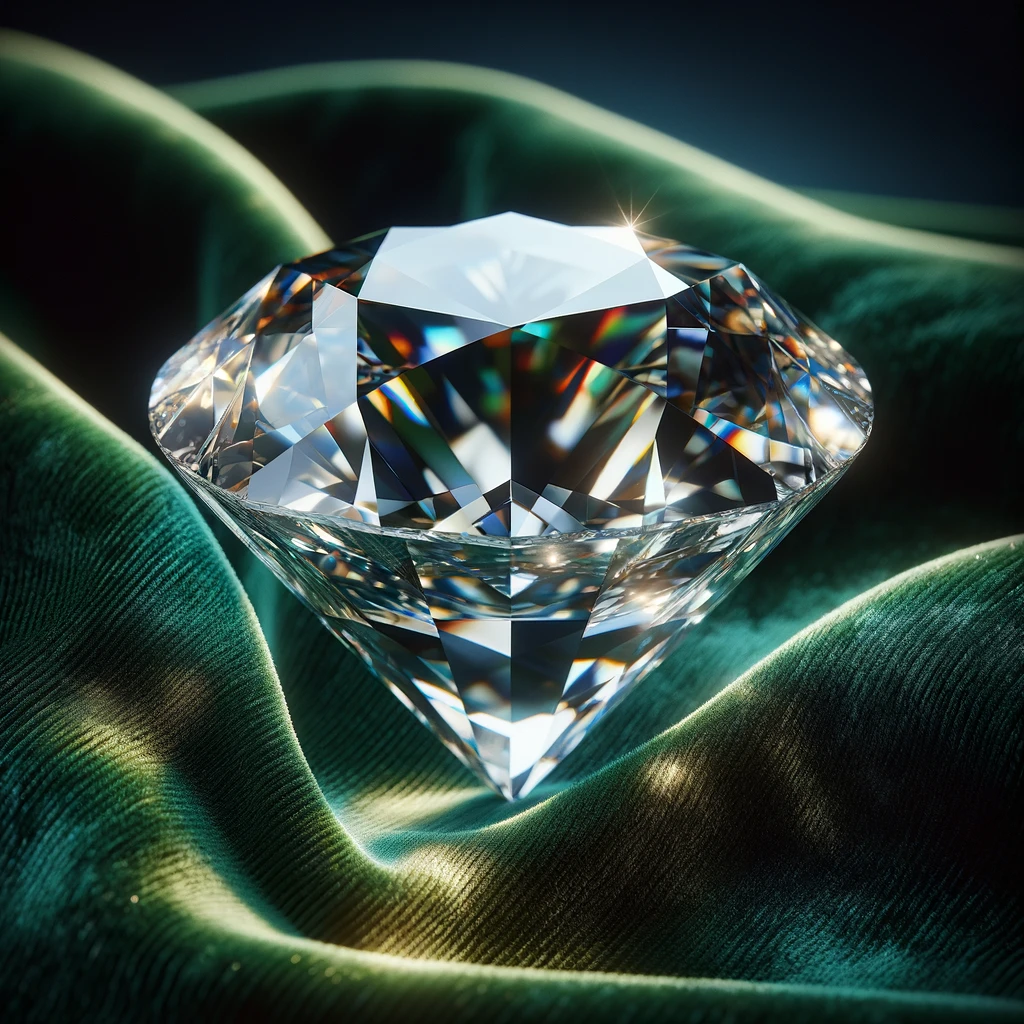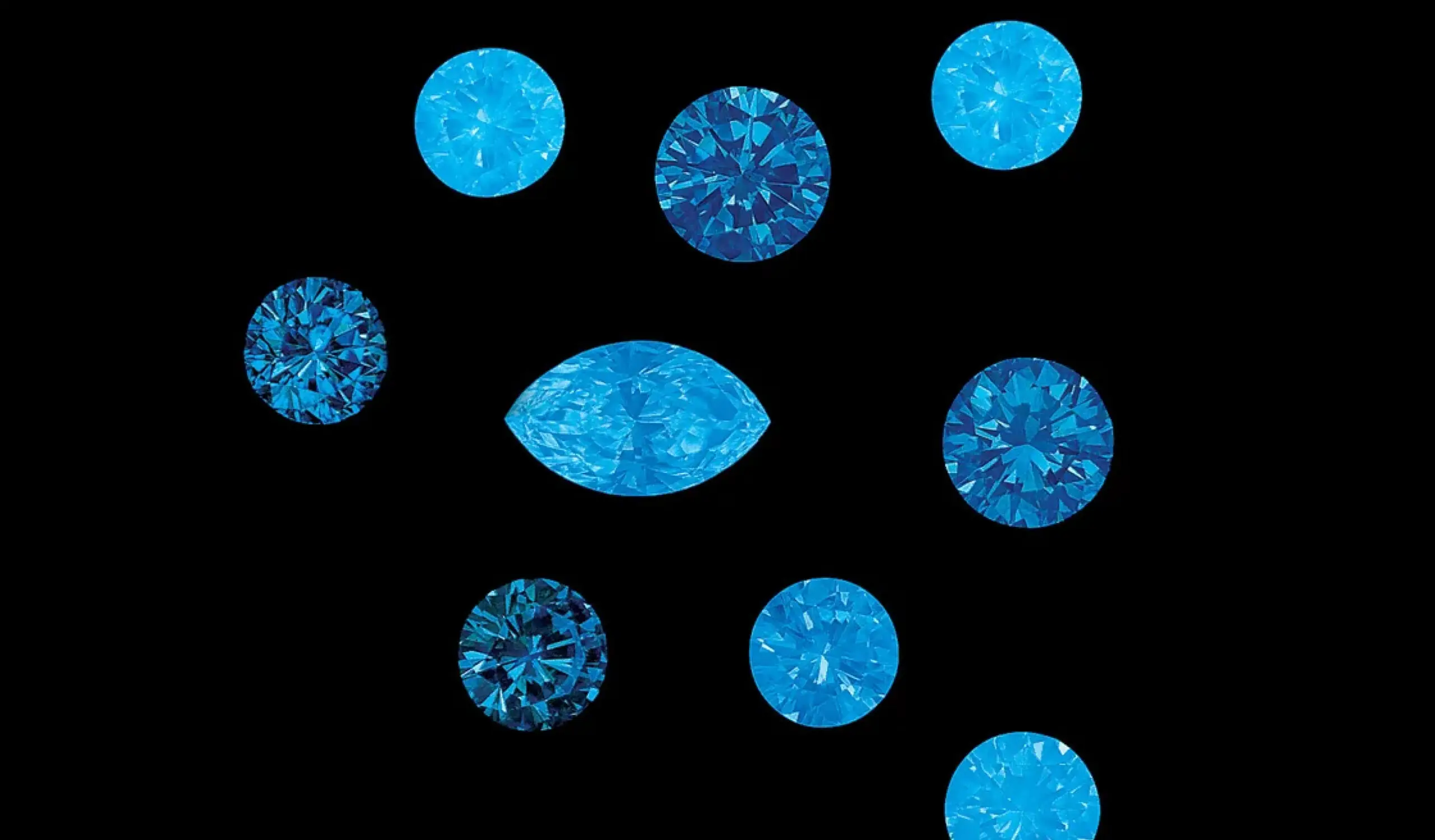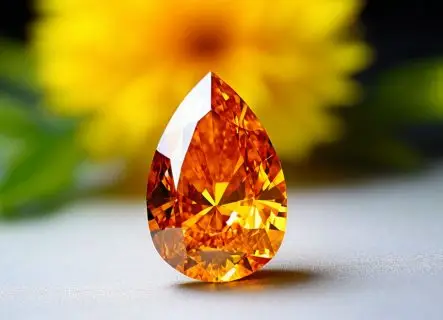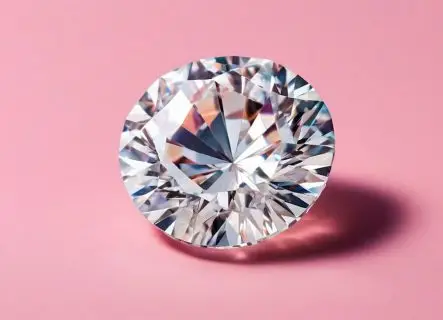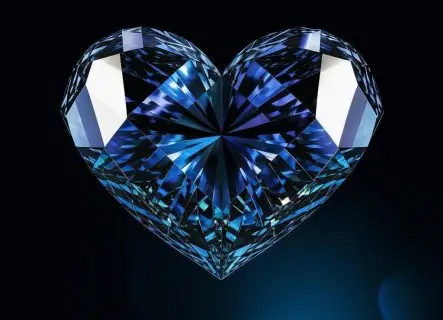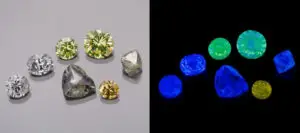
The world of diamonds is incredibly enigmatic and gorgeous.
It can be challenging to comprehend some features of diamonds if you’re not a gemologist. For instance, special consideration should be given to diamond fluorescence. We have addressed the most commonly asked concerns concerning this phenomena in order to provide a deeper understanding of this subject.
This article explains what fluorescence is, evaluates its pros and cons, and discusses how it impacts a diamond’s value.
What is diamond fluorescence?
When a diamond glows and emits visible light, it is known as diamond fluorescence. Certain stones exhibit fluorescence when subjected to long-wave UV radiation, such as those from the sun. Their light is bluish or, in rarer cases, yellow or orange.
The presence of naturally occurring elements in diamonds, such as boron, nitrogen, or aluminum, is linked to this effect. In order to return to their stable, natural condition, the electrons in these elements release the energy they have absorbed from UV light in the form of photons. Examine fluorescence to observe how a diamond glows in certain circumstances.
Fluorescence has an impact even though it isn’t listed in the well-known 4C standards for determining a diamond’s grade. For example, a perfect diamond according to all 4Cs parameters can lose slightly in price if it has fluorescence.
Do all diamonds have fluorescence?
No, is the simple response. The percentage of diamonds that glow is only 25–35%. The most common hue is blue, which is emitted by almost 95% of them. Additional hues of fluorescence include orange, yellow, white, red, and even green.
What grades of fluorescence exist?
The intensity of diamond fluorescence under long-wave UV light can be used to characterize it. Fluorescence might be weak, medium, strong, very strong, or absent. At medium, moderate, or very strong fluorescence grades, the color of the fluorescence becomes discernible.

Diamond fluorescence grade:
- None: no fluorescence in a diamond.
- Faint: a diamond exhibit a very slight amount of fluorescence that is not detectable by the naked eyes.
- Medium: a diamond with a stronger blue glow under UV light. Fluorescence is also undetectable to the unaided eye. However, the stone can appear cloudy, milky, or hazy.
- Strong: a diamond emit a substantial and intense blue hue under UV light, and can cause a diamond to appear very cloudy, milky, or hazy to the naked eye.
- Very Strong: a stone exhibit a prominent and saturated blue hue under UV light and can cause a diamond to appear substantially very cloudy, milky, or hazy, to the naked eye.
Is fluorescence visible to the naked eye?
To address this question, allow me to discuss one particular experiment.
The GIA Fluorescence Study was once carried out by GIA scientists. They gathered diamonds with color grades of I, K, E, and G. With the exception of the degree and intensity of blue fluorescence, all of the diamonds were extremely identical to one another.
Both lay observers and gemologists were invited to take part in the experiment. Everybody studied the jewels closely.
It turned out that fluorescence is not very obvious to the average observer. This indicates that fluorescence does not significantly alter the appearance of most diamonds. The typical person cannot distinguish between a diamond that exhibits fluorescence and one that does not.
Does fluorescence make a diamond more valuable?
This question has a vague answer: both yes and no. Diamonds with fluorescence may be worth more or less depending on the situation.
Let us examine the scenario in which a diamond’s value is positively impacted by fluorescence.
Blue fluorescence can occasionally improve a diamond’s look. This is especially valid for stones with color grades ranging from I to M. In this instance, blue fluorescence might give the appearance of a faint yellowish diamond being increasingly colorless and pure over the day. The cost is also impacted by this. Hence, the price per carat of diamonds with color grades I through M that have medium, strong, or extremely strong fluorescence may be slightly greater than that of stones with the same color grade but no fluorescence.
Fluorescence manifests itself in a different way when diamonds have a higher color grade. In this instance, the diamond’s value will suffer as a result.
When compared to diamonds of the same grade without fluorescence, diamonds with bluish fluorescence in color grades D to H can be less desirable. This is mostly because some people think that these kinds of diamonds appear a little foggy and fuzzy because of their fluorescence.
GIA study data, however, demonstrated that fluorescence essentially has no effect on the stone’s clarity. Fluorescence may, in extremely rare circumstances, increase the opacity of a light-scattering imperfection in a diamond. The likelihood of such an effect is, nevertheless, less than 1%.
However, the price of D to H diamonds with fluorescence will be less on the diamond market than that of comparable stones without this phenomena.
Conclusion: should I buy a diamond with fluorescence or not?
You have a choice in this matter, as in most other matters in life. Knowing whether or not a diamond has fluorescence when purchasing one is crucial since it adds integrity, transparency, and balance to the transaction while also somewhat influencing the stone’s price.
When evaluating a diamond that exhibits fluorescence, keep in mind that the well-known 4C criterion holds far greater importance than fluorescence level. Additionally keep in mind that fluorescence is nearly undetectable to the unaided eye.
Subscribe to discover the world of diamonds and gems. If you have any questions, please let us know.


